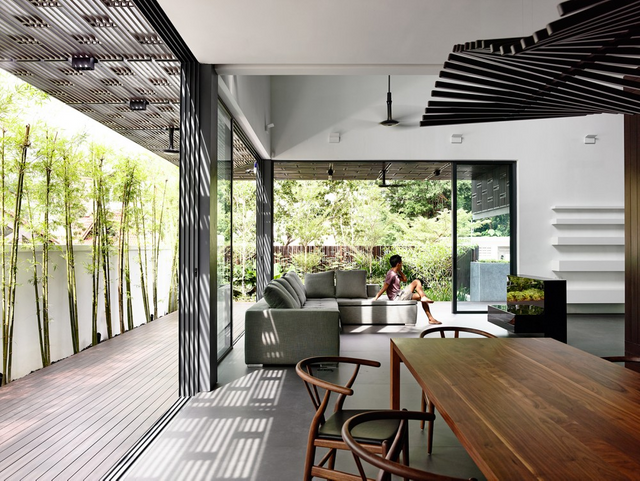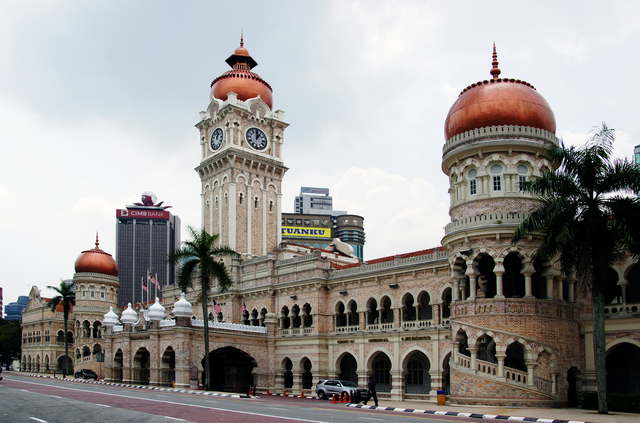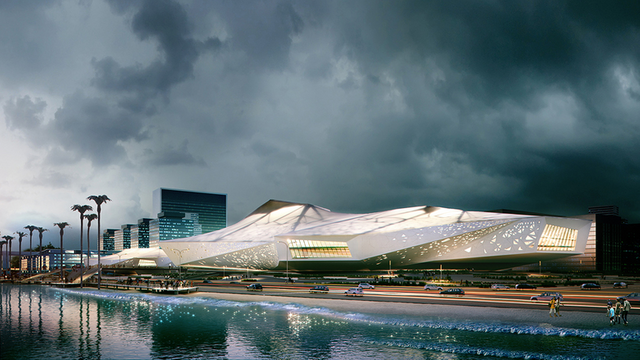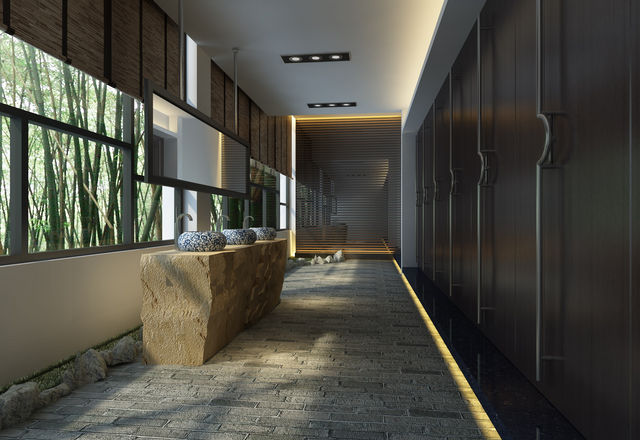Archisteem 5: Aesthetic & Architecture - How to Appreciate?
This is a sub-post from my previous post, Archisteem 4: The Future Builders - An Engagement with The Young. I will be writing on some of the questions raised by the students regarding architecture and engineering.
This is my personal view on how to appreciate the aesthetic value in architecture.

Source
First, we must understand the concept of Familiarity.
The familiarity of our senses with the specific space and time defines what is aesthetically appealing to us.
Some example:
Subconsciously, we will choose our spouse with characters and personality of our parents. Either is from the look or from the behavior, we will be easier to be attracted to familiar elements.
When we are away from our home, there will be a time where we will miss home. Sometime, to ease the feeling, we will choose to do something that could relate back to our hometown, like find the food that represents the locality of our hometown. This is quite normal especially for people of strong cultural background. My Korean friend will definitely hunt for kimchi after spending a few days in Malaysia. Thus, how appealing is the food depends on how deep down we adapted to it. If the food doesn’t look decent, we may not have the appetite or intention to consume it.
Let’s say our home is a small but comfortable apartment and we stayed with our parents since young. Then, the familiarity will lead us to appreciate such space as it leads to the feeling of back to home (unless there’s a bad memory with the family, then it will be vice versa).

Source
Familiarity comes from understanding and embracement.
With that being said, I can also use this concept to postulate the feeling of disgust.
Disgust can happen when we see something out of its form or out of the form that we are familiar with. For example, when we see rotten food, we felt disgusted as rotten implies hazardous. When we see worms (not necessary maggots), we may feel disgusted as well as instinctively labeled as hazardous. Being a kid brought up in the city, it is hard to imagine how a slum looks and feels like. One may feel disgusted with the poor hygiene system of the rural slum area as I also experienced before.

Honestly, I will feel disgusted if I am to live in such area, but unfortunately, the people there have no choice. It is not about the people, but the disgust referred to the living environment. Source
Why am I bringing out the feeling of disgust?
It is because this feeling is a reflection of our own rejection towards things that we feel not comfortable with. If we feel disgusted with something, meaning to say there’s a design failure on it and should be improved.
So how can we appreciate architecture?
Understand the building’s purpose
In terms of building purpose, it can be in macro and micro scale. In a macro scale, we can see how the building responded to the surrounding context. For example, if we put a philharmonic hall in the center of the city, how should the hall looks like? What kind of function should the building have beside performing hall? Logically, the building will need commercial spaces to sustain and also transportation terminal to connect the building with people. On the other hand, on a micro scale, we can look at home design. Residential buildings are meant for shelter, but people nowadays are looking for much integrative design. Thus, we see residential project usually comes with different recreational facilities, commercial and even educational. This is to include the users’ everyday lifestyle into the building. So, we can appreciate the building through its comprehensive understanding of its users’ desire.
Understanding the user experience
When we talk about user experience, it is about the details. For example, a good toilet design should have good ventilation, good choice of non-slippery floor tiles, clean and brighter colours, with appropriate dimension and also specific user condition like the disabled. Bringing the experience up another level, we can design the toilet to have greens, a smart water closet, smart mirror, and even good choice of aroma. Thus, user experience involves all the senses (except for taste).
Touch – is the choice of texture, whether it is smooth, rough, soft, hard, wavy, and so on. The different texture will create different feeling when we use the space. Touch does involve with temperature control as well which may be controlled mechanically or designed to be naturally ventilated. I will prefer natural ventilation if ever possible as I don’t like to be constantly chilled in a room.
Smell – the right choice of aroma in different space could help to sooth our emotion. Like in a toilet, we can choose the lemongrass aroma while in a bedroom, it can be lavender. One is refreshing and the other one is relaxing.
Visual – the choice of colour will affect the feeling of a person within a space. When we paint our room too dark, we will feel suffocating and eerie as it brings the feeling of confined space. When we have strong colors in our bedroom, we may have a hard time to sleep as it excites our mind. Thus, it is important to choose the right colour tone for each space. The brightness of lighting also falls under visual. Different spaces require different intensity of light, the bedroom will need warmer and dimmer lights compared to the dining room.
Sound – the choice of building materials especially the walls, roofs, window openings and doors are vital to create a comfortable space for our ears. In a bedroom, we need a quiet space to rest while the living room is otherwise. Thus, in terms of the space arrangement and materials choices, bedrooms are usually situated away from the entrance to dampen the noise transferred to the room.
With all these detailed considerations, we can learn to appreciate the aesthetic value of a building through our senses. Like for me, the reason I like natural ventilation is that of growing up in a tropical country. I like my space to be bright as I am used to a sunlight rich zone. The familiarity of the place I grew up will decide my judgment on the aesthetic value.
Understanding the transcendence of value

Source
Finally, transcendence of value refers to the story and memory behind a building. This can be the history of the colonial buildings that we see in Penang, like the Eclectic shophouses. Why it is designed in such a way and with a courtyard in the middle and have a setback of five foot. Every details have its story and reason. Besides the design consideration, personal and collective memories could be things that can transcend through time. This can be seen in religious buildings like temples, churches, and mosques. Monumental buildings like our Dataran Merdeka also share the spirit of place and time, remembering the moment when we gain our independence and stand as a country. All these values are valuable as it unites people regardless of age, ethnicity and even beliefs.
When we appreciate a building through understanding its core value, then the aesthetic value of it could be priceless and unique.
In conclusion, to be able to appreciate the aesthetic value of architecture, we must first understand familiarity and then look into PURPOSE, EXPERIENCE & VALUE to feel the building. Hope this can help :)
Here are some TV shows that inspired me to appreciate the power of design:
A China's TV shows which focus on helping the less capable families to realize the dream of refurbishing their home. For this episode, it is about a widow and her daughter who lived in a cramp and stuffy home. The designer showed his great understanding of the family needs, the local architectural style and the sensitivity on linking up memory and familiarity with the new design. Ultimately, their home had gotten a new look and the family was satisfied.
A lifestyle Youtube Video channel from China. I loved how the channel curates spaces and people, how it highlights the desire of the people and how the design reflects the desire.
Gordon Ramsay, the famous chef not only capable to tackle the food industry, he is good in hospitality as a whole. It is interesting to see how he approached the hotel industry and help the business owner to revamp the business from design to the business model.
Reference:
- How to Spot Good (and Great) Architecture
- HOW TO APPRECIATE ARCHITECTURE
- How to Really, Truly Appreciate a Work of Art

This is an #archisteem post.
A new tag that is to curate our existing built environment and also future built environment development. Want to know more? Read here.


Animated Banner Created By @zord189



These are some great posts @kimzwarch! "Good Architecture" is so hard to define with words, but your entries make sense and hopefully open up the non-architect world to the thought and psychology that goes into our craft. Would love to contribute to this series of entries!
Thanks @zhjacobs, that’s exactly what I want to achieve through this post :)
Sure, you are most welcome to contribute under the #archisteem tag.
Thank you for sharing your posts with us. This post was curated by TeamMalaysia as part of our community support. Looking forward for more posts from you.
To support the growth of TeamMalaysia Follow our upvotes by using steemauto.com and follow trail of @myach
Vote TeamMalaysia witness bitrocker2020 using this link vote bitrocker2020 witness